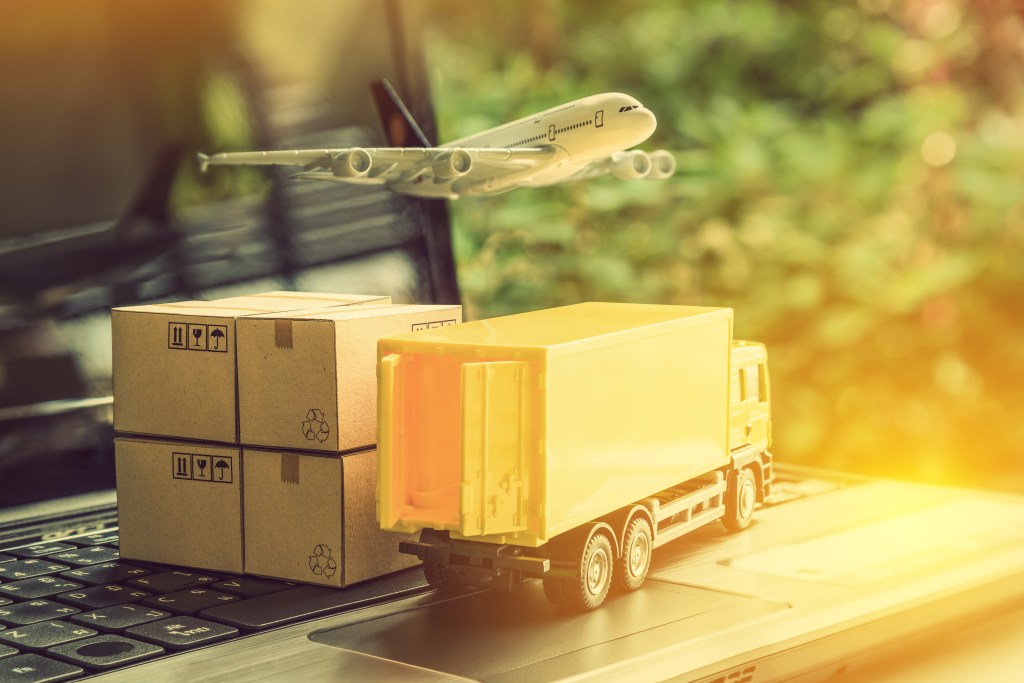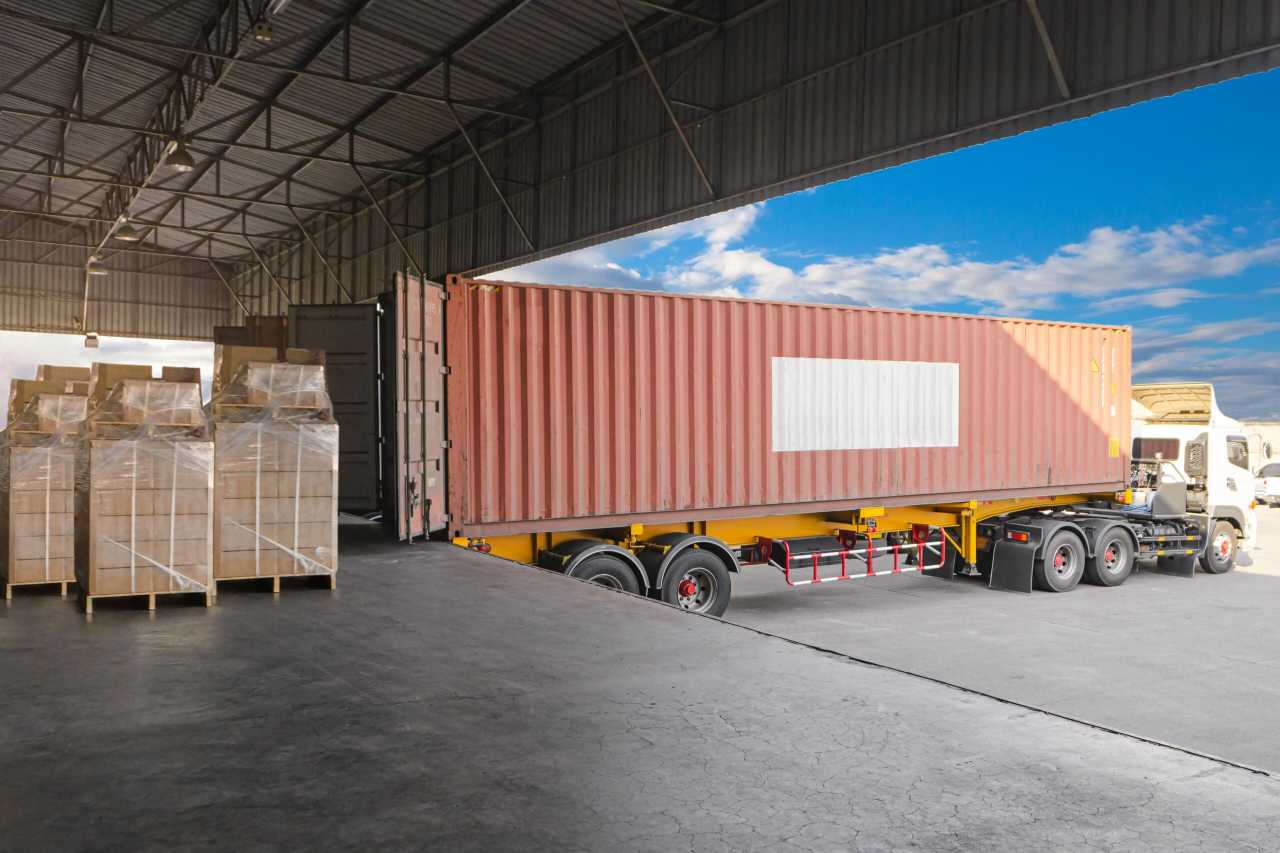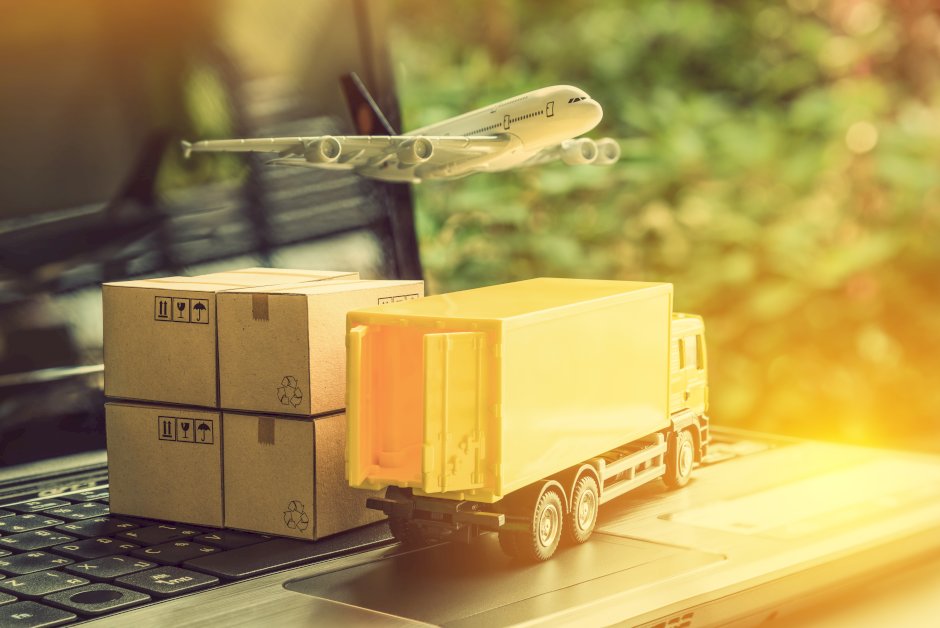Verified & Reviewed
Last updated on June 12, 2025 Written By Hannah Storrs

Last updated on June 12, 2025 Written By Hannah Storrs
Subscribe for More
The global B2B ecommerce market is more than five times the size of B2C – and growing rapidly. Yet the infrastructure built to support cross border B2B trade is often slow, outdated, and ill-equipped for the pace of today’s commerce. Brands are grappling with fragmented logistics systems, limited visibility into costs, and sluggish regional fulfillment that can’t keep up with wholesale expectations.
As global demand becomes more dynamic, the path forward is clear: a modern B2B fulfillment strategy must be powered by regional delivery, Delivered Duty Paid (DDP) guarantees, and agile air freight options. Together, these pillars help brands manage cash flow, mitigate tariff volatility, and support just-in-time (JIT) inventory strategies.
In this article, we’ll walk through the pillars of a seamless cross-border shipping strategy, and how expert partners like ShipBob and FlavorCloud can help.
The old vs. new cross border playbook
Legacy shipping models like Delivered Duty Unpaid (DDU) and Ex Works (EXW) leave much of the cost, risk, and complexity to the buyer. These methods often lead to unpredictable landed costs, customs delays, and strained buyer relationships.
Modern cross-border strategies flip the script and place more responsibility on the seller – and while it may seem counter-intuitive, handling more complexities yourself usually translates to a better experience for both you and your customers.
DDP, for instance, allows the seller to handle all import duties and taxes, offering full cost transparency and customs clearance at the point of sale. Models like B2B2C (business to business to consumer), MTC (manufacturer to consumer), and tech-enabled B2B air freight are helping brands meet global demand with greater speed and clarity.
Crucially, these models also allow for financial predictability and improved service levels – a standout benefit in a trade environment marked by freight disruption and regulatory uncertainty. As McKinsey notes, B2B buyers are increasingly expecting the same seamless purchasing experience as consumers – meaning control and predictability aren’t just operational needs; they’re competitive advantages.

The 3 pillars of seamless cross-border B2B
To truly achieve cost-effective and efficient cross-border B2B logistics, modern brands are leveraging 3 strategies. Here’s a breakdown of each strategy, and how it streamlines international B2B for brands like yours.
1. Regional fulfillment: why it’s growing outside the U.S.
Global 3PLs report faster growth in international fulfillment centers than in U.S. domestic ones – a clear signal that regional proximity is becoming a priority for global merchants.
This is not a fluke; by placing inventory closer to the end market, brands can:
- Reduce transit times
- Avoid many of the bottlenecks tied to customs clearance and long-haul shipping (which is especially true in high volume regions – like Australia, which had 32% year-over-year growth in 2024).
- Support smarter tax strategies by minimizing repeat cross-border shipments, which can trigger duplicate duty exposure, allowing brands to remain under or compliant with local tax thresholds
Ultimately, storing inventory regionally (when paired with DDP capabilities) creates a more reliable delivery experience, helping brands meet strict service level agreements (SLAs) and comply with evolving regulatory landscapes.

2. DDP and its role in B2B agility
Delivered Duty Paid (DDP) is a fulfillment model where the seller assumes full responsibility for customs clearance, duties, and taxes.
DDP not only simplifies the shipping process for buyers, but also enhances cash flow and operational efficiency for sellers.
For wholesale buyers, knowing the full landed cost upfront can be huge. It often:
- Reduces invoicing disputes.
- Results in shorter payment cycles.
- Leads to more on-time deliveries, since customs delays are less likely when documentation and fees are handled in advance.
- Eliminates a major point of friction for global buyers, opening the door to smoother financial reconciliation and stronger business partnerships.
Increasingly, 3PLs are building capabilities to support DDP, integrating customs brokerage, tax estimation, and HS code classification into their services. This makes it more accessible for mid-market and scaling brands to implement without needing a dedicated in-house compliance team.
How DDP supports a more agile supply chain
In today’s environment of volatile demand and lean inventory strategies, agility is paramount. DDP empowers brands to allocate inventory flexibly across borders without the burden of setting up legal entities in each market. This freedom enables brands to respond faster to shifting demand patterns, particularly in regions experiencing rapid ecommerce growth.
By streamlining customs processes and enabling door-to-door delivery, DDP also supports faster purchase order fulfillment. This is especially valuable in wholesale models where retailers expect quick replenishment and minimal administrative overhead.
In addition, the consistency of DDP allows brands to scale internationally with less operational risk, giving them a reliable foundation to test and expand into new markets.
“We also leverage ShipBob Delivered Duties Paid (DDP) shipping to reach our customers outside of the US. Using ShipBob DDP allows us to ship worldwide and we’re lucky that ShipBob has a solution like that because we’ve used it since we onboarded.”
Kayleigh Christina, Co-Founder and CMO of CLEARSTEM

3. Air freight and the B2B shift toward just-in-time (JIT)
As ocean freight becomes more expensive and less reliable, businesses are turning to air freight to support just-in-time inventory models. This shift is particularly relevant for high-margin, fast-moving products and markets where delivery speed is tied to conversion.
Freight unpredictability—driven by global disruptions and tariff swings—has made nimbleness essential. Air freight allows brands to move quickly, bypass port congestion, and respond to fluctuations in wholesale demand. Unlike traditional ocean or less than container load (LCL) shipments, air freight provides better visibility and faster replenishment cycles. ShipBob, through its partnership with FlavorCloud, can provide a DDP B2B air freight network solution designed for this exact need.

ShipBob + FlavorCloud: a winning pair for end-to-end global B2B
B2B ecommerce is undergoing rapid transformation—and fulfillment strategies must evolve in kind. The combination of regional fulfillment, DDP, and agile air freight gives brands the infrastructure they need to thrive in today’s global landscape; but to achieve this, you’ll need the right combination of strategic partners.
As experts in supply chain enablement, omnichannel fulfillment, and cross-border shipping, ShipBob offers ecommerce brands the solutions they need to fulfill their internationally-bound DTC and B2B orders seamlessly.
You can leverage ShipBob’s network of 60+ fulfillment centers across the US, UK, Europe, Australia, and Canada to place inventory to minimize shipping times, costs, and complexities – all while ShipBob’s team of experts handle your retail distribution and dropshipping orders with ease.
ShipBob also offers a DDP solution by partnering with FlavorCloud. This solution enables merchants to provide full landed costs, manage compliance and customs proactively, and accelerate delivery timelines without passing risk or complexity to their buyers.
“Being able to send products from the US to Canada was really important to us. A lot of other fulfillment providers don’t have an option for Delivered Duties Paid (DDP). We use ShipBob DDP to reach customers in Canada, but also so our friends and family there can buy our product. We definitely plan on going international eventually and we’re glad ShipBob has several options for us to leverage when we need them.”
Jessy Shenfeld, Co-Founder of Cowboy Colostrum
With industry-leading experts like ShipBob and FlavorCloud at your side, your ecommerce brand can serve B2B buyers more reliably, operate with greater predictability, and scale into new markets with confidence.
To learn more about how using B2B air freight networks can help with tariff and duty deferment, join the ShipBob Tariffs Unpacked session with FlavorCloud or click the button below to get in touch.
To learn more about how FlavorCloud can help your brand optimize its global shipping strategy, click the button below.
About FlavorCloud
FlavorCloud is an “anywhere to anywhere™” logistics platform that solves the enormous challenges of navigating the antiquated, manual, and deeply fragmented global shipping and trade landscape. With a best-in-class suite of products, you can enable cross border international shipping in just one day. Backed by an AI-optimized network, our mission is to simplify global ecommerce while you focus on what you do best, growing your business.




